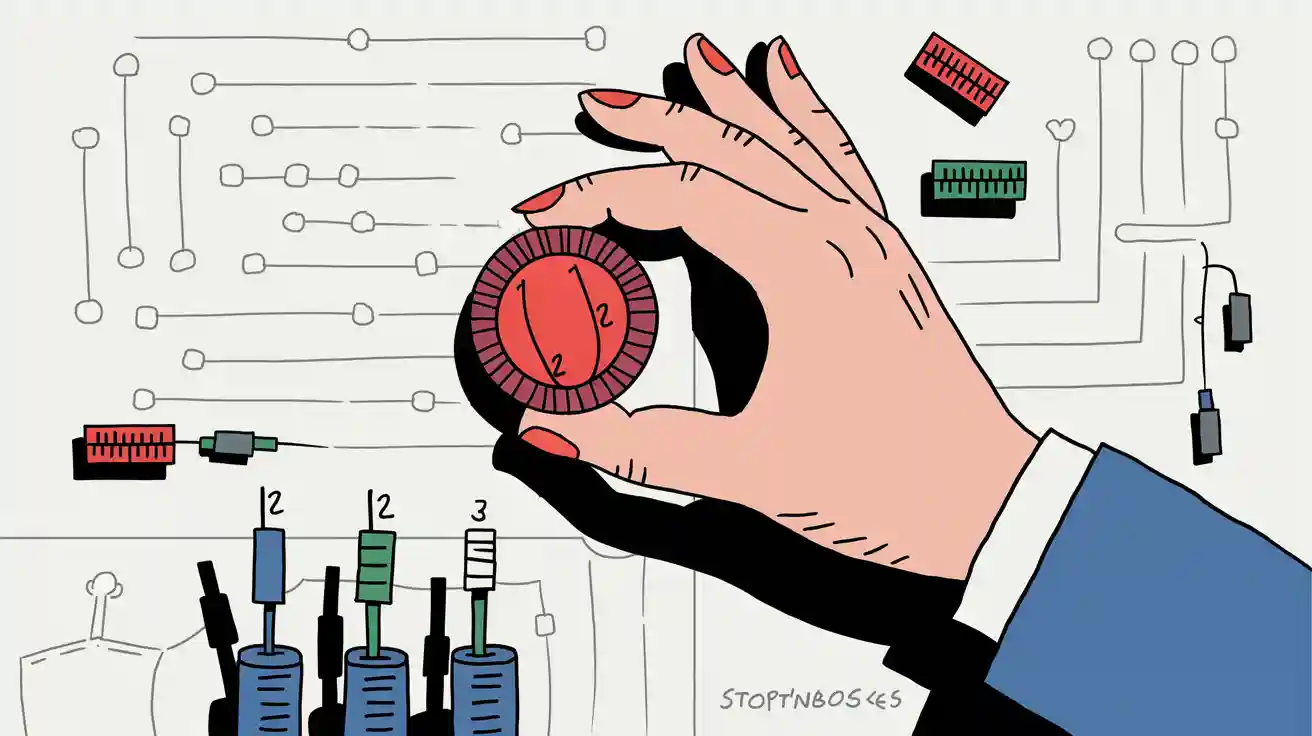A potentiometer is one of the most common components in electronic circuits. It’s a type of variable resistor used to control voltage or current flow. Whether you’re adjusting the volume on a radio, tuning a sensor, or dimming a light, a potentiometer often plays a crucial role. To use one properly, it’s essential to understand the potentiometer pinout—how the pins are arranged and what each one does. Knowing the pin configuration allows you to connect it correctly in a circuit and avoid damaging your components.
What Is a Potentiometer?
A potentiometer, often called a “pot,” is a three-terminal resistor with a sliding or rotating contact that forms an adjustable voltage divider. It’s available in various forms, including rotary, slide, and trimmer potentiometers. In its simplest form, the potentiometer can act as a voltage divider, providing a variable output voltage based on the position of its wiper. It can also be used as a rheostat, adjusting resistance in a circuit. Understanding the potentiometer pinout helps you set it up correctly for either use.

Potentiometer Pinout Explained
A standard potentiometer has three pins. These pins are typically arranged in a straight line and are easy to identify once you know what to look for. The three pins correspond to the two ends of the resistive track and the middle connection that moves along it, known as the wiper. The first pin connects to one end of the resistive element. The second pin, located in the middle, is the wiper terminal. This is the pin that moves along the resistive track when the potentiometer knob or slider is adjusted. The third pin connects to the other end of the resistive element. When you rotate the knob, the wiper moves, changing the resistance between the middle pin and either outer pin. In practical terms, this movement adjusts the voltage or current in the circuit. Correctly understanding the potentiometer pinout ensures that your circuit behaves as expected.
How the Potentiometer Works
Imagine the potentiometer as a simple voltage divider. When you apply voltage across the two outer pins, the wiper pin provides an adjustable voltage between them. If the wiper is positioned at the midpoint, it outputs half the input voltage. Move it toward one end, and the voltage changes accordingly. This principle allows precise control in many applications, such as adjusting signal levels, calibrating sensors, or fine-tuning motor speeds. By learning how the potentiometer pinout connects to the internal resistive track, you can configure it correctly for voltage control or resistance adjustment.
Types of Potentiometers and Their Uses
There are different types of potentiometers depending on the application. Rotary potentiometers are the most common type, featuring a rotating knob. They’re used in devices like audio equipment, where you control volume or tone. Slide potentiometers, as the name suggests, have a linear slider instead of a rotating knob. They’re often found in mixing consoles and lighting controls. Trimmer potentiometers are small, adjustable types designed for fine-tuning circuits during calibration. Regardless of the type, the potentiometer pinout remains consistent, with three terminals serving the same basic function.
Common Applications of Potentiometers
Potentiometers are widely used in both analog and digital systems. In audio equipment, they act as volume and balance controls. In industrial controls, they help adjust sensitivity, motor speed, and other variables. Microcontroller projects, such as those involving Arduino or Raspberry Pi, often use potentiometers as input devices to provide analog signals. For instance, you can use one to control LED brightness or servo motor position. Understanding the potentiometer pinout is key to integrating it properly with microcontrollers and ensuring accurate analog readings.
Tips for Wiring a Potentiometer Correctly
When connecting a potentiometer, it’s important to know which pin serves which purpose. Start by identifying the three terminals. The outer two are the ends of the resistive track. One is connected to the ground, and the other to the voltage supply. The center pin is the wiper, which provides the variable output. You can use a multimeter to check the resistance between pins and confirm their positions if you’re unsure. Once you understand the potentiometer pinout, wiring it becomes simple and intuitive.
Conclusion
A potentiometer is a simple yet powerful component that provides adjustable control in electronic circuits. Its versatility makes it essential in countless applications, from basic DIY projects to complex industrial systems. But to use it effectively, you must understand how its pins are arranged and how they interact. The potentiometer pinout—three pins representing two resistive ends and a moving wiper—defines how voltage or resistance changes within the circuit. Once you grasp this, you can confidently design, wire, and troubleshoot circuits involving potentiometers, ensuring precise control and reliable performance.
Follow Us On Twitter For More Information:

